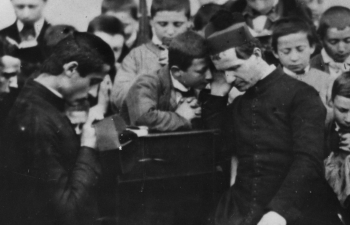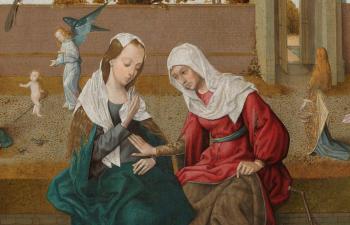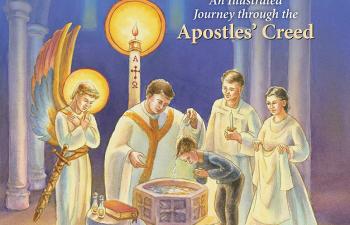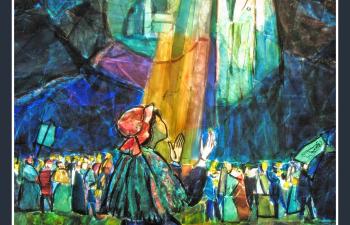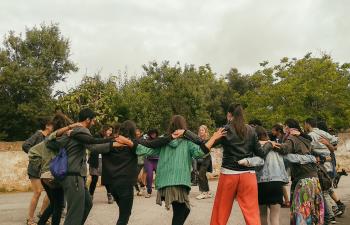What is urgently needed for the New Evangelisation, wrote Blessed John Paul II in Christifidelis laici, is a ‘mending of the Christian fabric of society’. And then: ‘for this to come about what is needed is to first remake the Christian fabric of the ecclesial community itself present in these countries and nations.’ Pope Benedict XVI echoes this call in Ubicumque et semper, the Apostolic Letter establishing the Pontifical Council for Promoting the New Evangelisation.
There is a clear order and strategy here. Societies need to discover their Christian roots and identities. And for this to happen there must first of all be a remaking of ‘the fabric’ of the Church in each society.
Blue and purple and scarlet
What is this fabric? One is taken straight to a liturgical image from the Old Testament, to an image of the tabernacle:
‘Moreover you shall make the tabernacle with ten curtains of fine twined linen and blue and purple and scarlet stuff.’ (Ex 26:1).
In three, detailed chapters (Chs. 26-28) the Book of Exodus patiently describes and prescribes the place of this fine linen and the ‘blue, purple and scarlet stuff’ in the preparing of a place of worship for the Lord.
For the fabric of the Christian community to be remade, then, one might point above all to a refocusing on the tabernacle and to the mending of Christ’s Body, his Church, through adoration. ‘Human life finds its unity in the adoration of the one God’, says the Catechism (CCC 2114). Only worship ‘integrates man and saves him from an endless disintegration’. We should note that during the Year of Faith the Holy Father has asked every member of the Church to join him, on the Feast of Corpus Christi in 2013, for an hour’s adoration of the Blessed Sacrament.
The lay vocation
It is surely also significant that this call is found in John Paul’s encyclical on the laity, for the call to a New Evangelisation is for every member of the Church. It is also stressing the need for the apostolic life of the Christian to flow from a contemplative base and for the priestly character of the lay vocation to ground the prophetic and the kingly. There is a timely caution against activism here. The New Evangelisation is not a human project, however apparently compelling and grand in its conception and design. It is a rather a simple re-centring of each member of the Body on the Head. ‘God must give man a new heart. Conversion is first of all a work of the grace of God who makes our hearts return to him.’ (CCC 1432).
Freewill offerings
There is one other point emphasised in the Exodus passage to which we might attend. In describing the making of a dwelling for God’s presence, the Lord asks that it be constructed from the free offerings of the people:
‘Speak to the people of Israel, that they may take for me an offering: from every man whose heart makes him willing you shall receive the offering for me. And this is the offering you shall receive from them: gold, silver and bronze, blue and purple and scarlet stuff and fine twined linen…’ (Ex 25:2-3)
The dwelling can only be made from offering presented by those whose hearts ‘are willing’. There is no compulsion. It is this sense of deep respect for human freedom, and therefore the priority of a simple appeal to the Christian community, that underlies the New Evangelisation. The mending of the ecclesial fabric is made possible only by God’s grace working with a free human response, with a pure fiat.
This article is originally found on page 4 of the printed edition.
This article is from The Sower and may be copied for catechetical purposes only. It may not be reprinted in another published work without the permission of Maryvale Institute. Contact [email protected]


